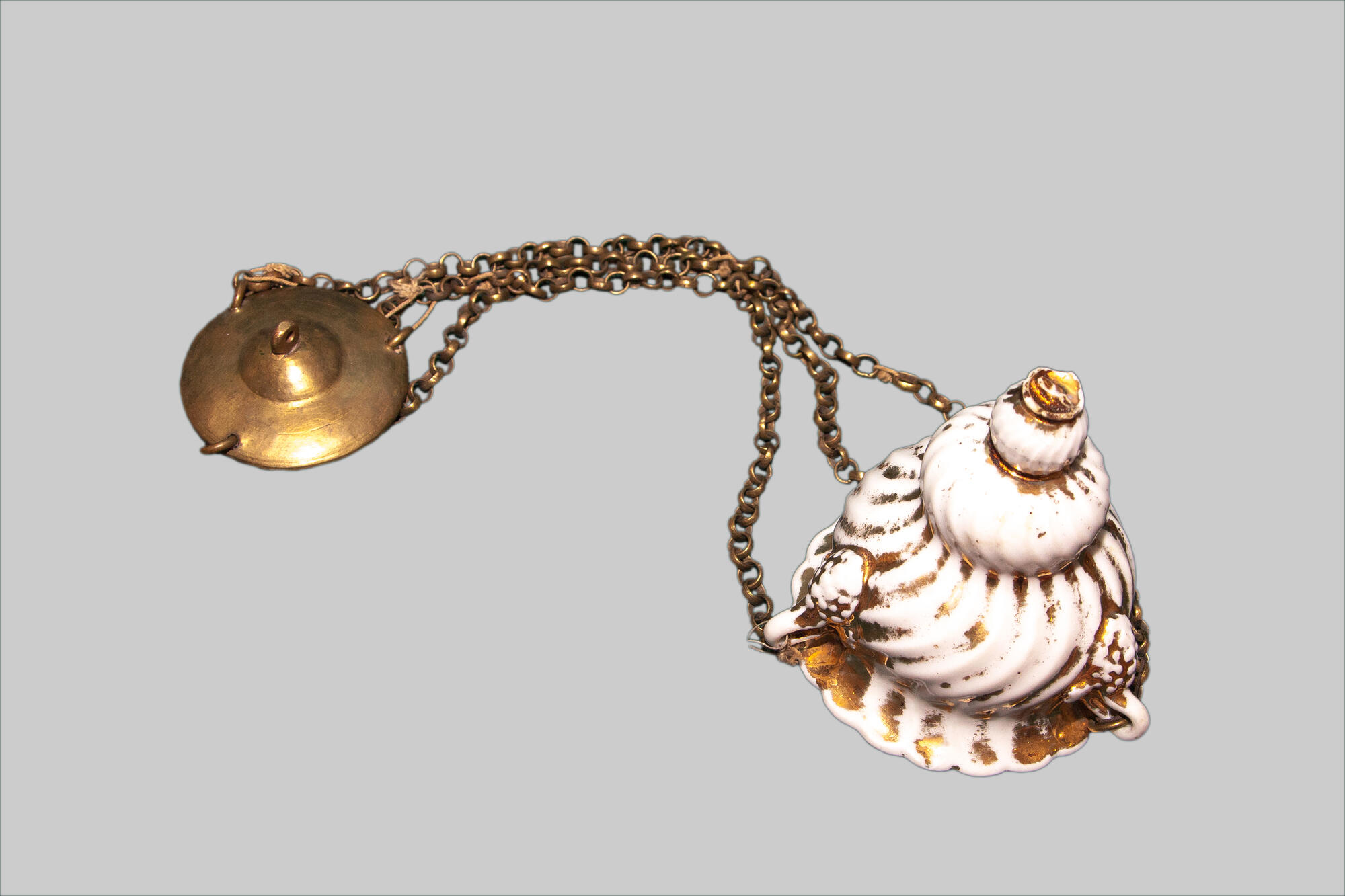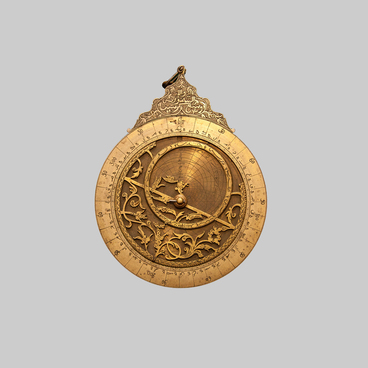An icon lamp is a lamp that lights up in front of icons, relics, holy places and particularly sacred places of the temple. The earliest lamps – candila – were made of clay, bronze, and later of metal — copper, brass, and silver. They were decorated with ornaments, enamels, glass, filigree, and precious stones. In the 18th–19th centuries, icon lamps appeared as porcelain, glass or faience bowls.
Icon lamps are divided into table, wall and hanging. The icon lamp from the collection of the Tobolsk Museum Reserve belongs to the hanging ones. The porcelain bowl is gilded and is vase-shaped with three hinges in the form of grape brushes. Three metal chains are attached to the hinges for hanging. The hanging icon lamp is attached to the ceiling or to the icon-case - a special locker for the icon.
The lamps were filled with chrism, olive oil, called wooden oil. A float was mounted in the upper part of the bowl, through which a wick was inserted – a narrow strip of thin matter, tightly twisted into a tourniquet. An icon lamp light should not have been too bright.
Lighting an icon lamp during God’s Service or Home Prayer is one of the most common actions in Orthodox culture. The light of the lamp symbolizes the invisible divine light. The tradition of burning candles and icon lamps in the temples itself originated in ancient times. In the Old Testament times, an inextinguishable icon lamp burned in front of the book of the law of Moses, indicating that the Law of God lights up a human’s life. Later, in Christian churches, the icon lamps retained spiritual and symbolic significance. A chrism also had its particular sense, it symbolized the purity and sincerity of man in worship of God. In this connection, the tradition of donation of oil by believers to fill the icon lamps has been preserved.
In the Christian homes, there was a tradition to light an inextinguishable lamp in the red corner, as in the temple. One of the Orthodox traditions is anointing a sick person or simply praying with the oil burned off. For example, Reverend Seraphim Sarovsky lit icon lamps for anyone who asked him to pray for himself or for his dead relatives.
In modern Orthodox churches, the icon lamps burn in the altar, up on the shrine, in front of all the icons in the middle of the temple.
Icon lamps are divided into table, wall and hanging. The icon lamp from the collection of the Tobolsk Museum Reserve belongs to the hanging ones. The porcelain bowl is gilded and is vase-shaped with three hinges in the form of grape brushes. Three metal chains are attached to the hinges for hanging. The hanging icon lamp is attached to the ceiling or to the icon-case - a special locker for the icon.
The lamps were filled with chrism, olive oil, called wooden oil. A float was mounted in the upper part of the bowl, through which a wick was inserted – a narrow strip of thin matter, tightly twisted into a tourniquet. An icon lamp light should not have been too bright.
Lighting an icon lamp during God’s Service or Home Prayer is one of the most common actions in Orthodox culture. The light of the lamp symbolizes the invisible divine light. The tradition of burning candles and icon lamps in the temples itself originated in ancient times. In the Old Testament times, an inextinguishable icon lamp burned in front of the book of the law of Moses, indicating that the Law of God lights up a human’s life. Later, in Christian churches, the icon lamps retained spiritual and symbolic significance. A chrism also had its particular sense, it symbolized the purity and sincerity of man in worship of God. In this connection, the tradition of donation of oil by believers to fill the icon lamps has been preserved.
In the Christian homes, there was a tradition to light an inextinguishable lamp in the red corner, as in the temple. One of the Orthodox traditions is anointing a sick person or simply praying with the oil burned off. For example, Reverend Seraphim Sarovsky lit icon lamps for anyone who asked him to pray for himself or for his dead relatives.
In modern Orthodox churches, the icon lamps burn in the altar, up on the shrine, in front of all the icons in the middle of the temple.



